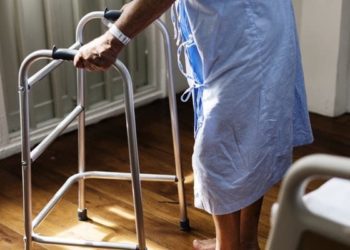ACE-inhibitors and statins do not impact albuminuria in adolescents with type 1 diabetes mellitus: The AdDIT trial
1. In adolescents with type 1 diabetes mellitus, the albumin-to-creatinine ratio was not significantly changed by angiotensin-converting-enzyme (ACE) inhibitors alone, statins alone, or the two in combination compared to placebo.
2. In this population, ACE-inhibitors and statins did not demonstrate a significant benefit on other markers of diabetic vascular complications including the glomerular filtration rate (GFR), blood pressure, or carotid intima-media thickness.
Evidence Rating Level: 1 (Excellent)
Study Rundown: The development of vascular complications in type 1 diabetes is known to begin in adolescence despite the lack of clinical manifestations until adulthood. Albuminuria is a validated early marker for nephropathy and correlates with other vascular complications of diabetes. The Adolescent Type 1 Diabetes Cardio-Renal Intervention Trial (AdDIT) investigated whether ACE-inhibitors and statins alone or in combination reduced albuminuria and would be an effective intervention to reduce the incidence of future vascular complications in adolescents with type 1 diabetes. The primary outcome, a change in the albumin-to-creatinine ratio, was not significantly affected by ACE-inhibitors alone, statins alone, or the two in combination. Among key secondary outcomes, including microalbuminuria, lipid levels, carotid intima-media thickness, blood pressure, GFR, levels of high-sensitivity C-reactive protein, and asymmetric dimethylarginine, the only significant effect was a reduction in non-HDL lipids in the group treated with statins. The incidence of adverse events was similar between all groups. While additional follow-up is needed to assess potential long-term effects, this study suggests early intervention with ACE-inhibitors and statins in adolescents with type 1 diabetes is not beneficial.
This double-blind, randomized, placebo-controlled trial was adequately powered to observe a significant change in the albumin-to-creatinine ratio based on previously published data. It provides evidence on ACE-inhibitors and statins in the diabetic adolescent population which has little data compared to adults. A major limitation is the short-duration of the trial relative to the time it takes to develop vascular complications in diabetes.
Click to read the study in NEJM
In-Depth [randomized controlled trial]: From May 2009 through August 2013, 443 adolescents aged 10-16 with a ³1 year diagnosis of type 1 diabetes and albumin-to-creatinine ratio in the upper third of a screened population of 4407 patients underwent randomization to ACE-inhibitor (quinapril at a dose of 5 to 10 mg daily) and placebo, statin (atorvastatin at a dose of 10 mg daily) and placebo, ACE-inhibitor and statin, or placebo and placebo groups. Urine and blood samples were taken every 6 months, with final assessments occurring after a minimum of 2 years and maximum of 4 years. The median follow-up was 2.6 years (range, 0.1 to 4.4).
Neither ACE-inhibitors (effect, -0.01; 95% confidence interval [CI], -0.05 to 0.03) or statins (0.01; 95% CI, -0.02 to 0.05) alone or in combination (0.04; 95% CI, -0.04 to 0.12) had a significant effect on the area under the curve (AUC) of the albumin-to-creatinine ratio. Among secondary outcomes, ACE-inhibitors demonstrated no reduction in microalbuminuria (p = 0.046, non-significant when analyzed for negative findings) with an adjusted hazard ratio [HR] of 0.57 (95% CI, 0.35 to 0.94; p = 0.03). Statin treatment was associated with lower total, LDL, and non-HDL cholesterol. There were no significant effects of either ACE-inhibitors or statins on carotid intima-media thickness or asymmetric dimethylarginine levels. Statins led to a non-significant reduction in levels of high-sensitivity C-reactive protein. A patient’s ACE-inhibitor dose was reduced in 56/222 patients (25%) due to postural hypotension. Four serious adverse events were found to be related to ACE-inhibitor treatment (two significant reductions in GFR, a hypotensive episode, and an elevation in alanine aminotransferase). No serious adverse events were found related to statin therapy.
Image: PD
©2017 2 Minute Medicine, Inc. All rights reserved. No works may be reproduced without expressed written consent from 2 Minute Medicine, Inc. Inquire about licensing here. No article should be construed as medical advice and is not intended as such by the authors or by 2 Minute Medicine, Inc.


![Active smoking cessation intervention may provide tangible results [Project CLIQ]](https://www.2minutemedicine.com/wp-content/uploads/2014/12/smoking-e1418644951268-350x250.jpg)




